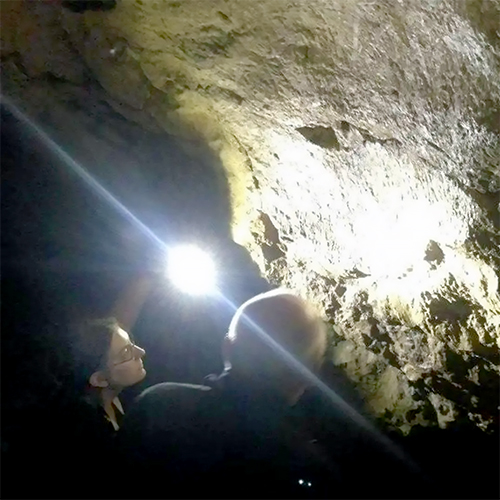Arts & Science alum Sarah Ranlett is unlocking new insights from ancient archeological collections and drawing on her U of T education to drive scientific discovery as a post-doctoral associate at the Yale Peabody Museum.
“U of T gave me the freedom to explore varied approaches to archeology — fieldwork, collections management and research — while connecting me with incredible mentors and opportunities that guided my career,” says Ranlett, who earned her PhD in 2022 from the Department of Anthropology.
“I'm fascinated by our connection to the past. Deep in a cave, you can find a prehistoric sculpture of a bison and know that, despite the vast differences in our lives, its creator intended it to be recognized as a bison. Tens of thousands of years later, I stand where they stood, seeing what they saw. Message received.”
Drawn to U of T’s renowned anthropology program and unparalleled research opportunities, Ranlett earned her PhD under the supervision of Professor Michael Chazan, a leading expert on Paleolithic archeology.

Ranlett's dissertation focused on the use of amber, lignite, soapstone, fossils and crystals — materials that may have been considered precious during the Upper Paleolithic in southwest France (10,000 to 40,000 years ago). She analyzed how ancient communities valued these materials, offering new insights into prehistoric culture.
“The way we experience artifacts today — often behind museum glass or in print and digital media — sometimes limits how we understand their past roles,” says Ranlett. “Until recently, many were presented in black and white, leading to an under-theorization of features like colour, texture or smell.”
Ranlett broadened her expertise by gaining field experience in Europe and closer to home with the Schreiber Wood Archaeology project at U of T Mississauga. She also worked with collections at the Royal Ontario Museum and served as a consultant for UNESCO’s World Heritage Centre.
These research experiences deepened her commitment to conservation and ethical curation, principles that shape her work today.
You never know what experience is going to be the one that changes your path in life, so even if an opportunity doesn’t seem relevant or feels like a detour, just try to say yes more than you say no.
“U of T is incredible because of its vast resources. The libraries offer comprehensive academic support and the diverse programs across campuses provide unique opportunities. As a teaching assistant for the Material Culture and Semiotics program administered by Victoria College, I found myself learning alongside the students, which was an invaluable interaction.”
At the Yale Peabody Museum, Ranlett is applying her knowledge to one of North America’s largest collections of Pleistocene-era artifacts from Egypt. The artifacts are part of a legacy project from UNESCO’s Nubia Campaign in the 1960s to preserve cultural heritage before the flooding caused by the construction of the Aswan High Dam.
“Legacy collections still have a lot to offer,” she says. “The excavations might be over, but the research is ongoing. The artifacts we study today can still reveal new insights into human history.”
Ranlett is dedicated to bridging the gap between fieldwork, museum curation and education, ensuring archeological collections remain accessible to scholars and the public for years to come so messages aren’t missed from our ancestors.
Her advice to aspiring archeologists? Stay driven, stay curious and don’t be afraid to dig into something new.
“You never know what experience is going to be the one that changes your path in life, so even if an opportunity doesn’t seem relevant or feels like a detour, just try to say yes more than you say no.”

